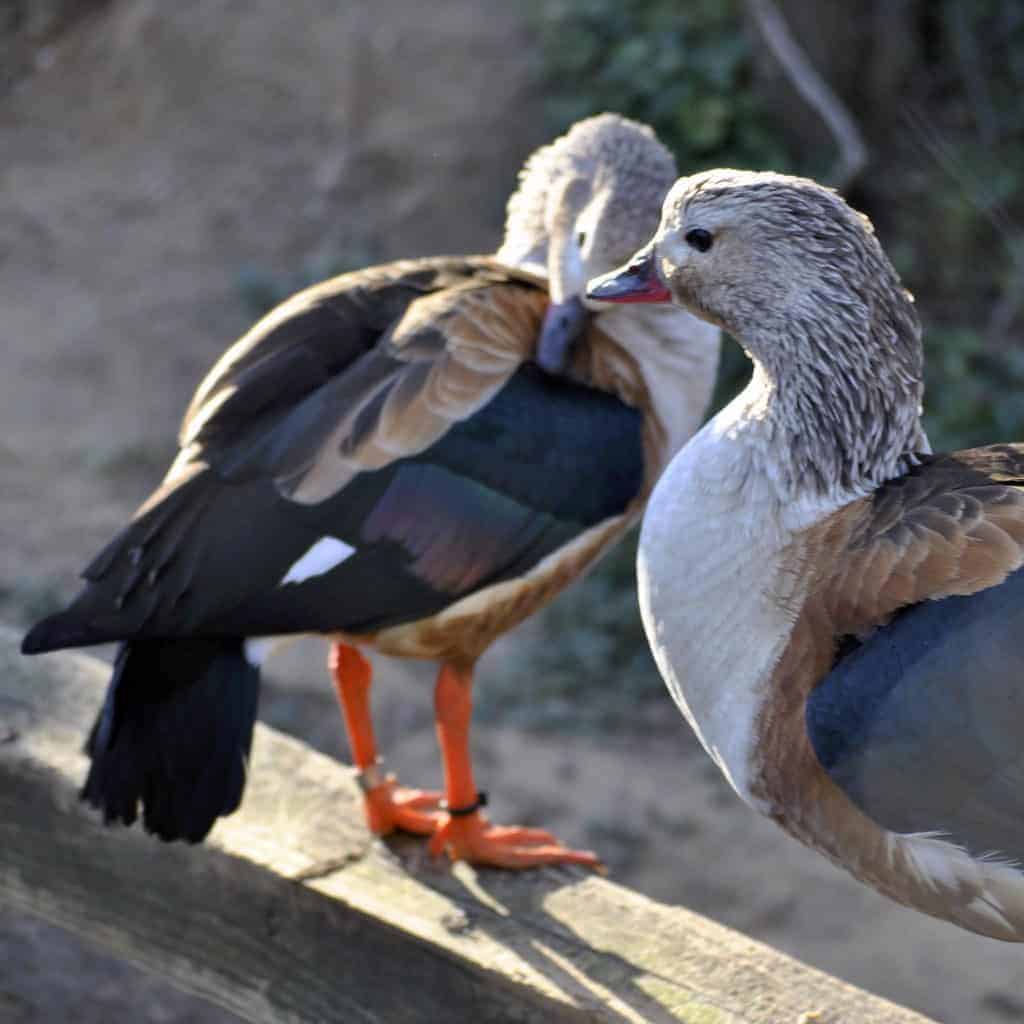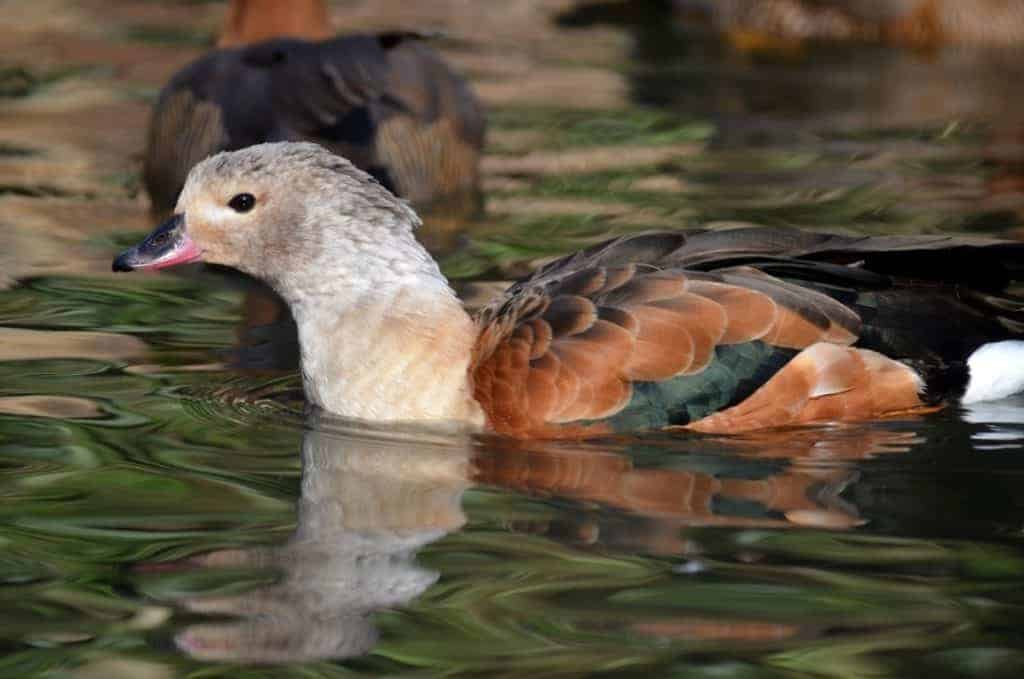Orinoco Goose


Neochen jubata
A distinctive South American species, which has been proposed as a possible link between the shelducks and the sheldgeese. It is native to the northern and central portion of South America, extending east to the Brazilian coastline. The Orinoco Goose is monomorphic, meaning males and females look the same. They are a beautiful sooty colour, with tan flanks, wings and back. The rear portion of the bird is black with a white rump.
Orinoco Geese are one of the few species of cavity nesting geese, utilizing hollow logs, elevated off the ground. On very rare occasions, they may nest on the ground. Breeding occurs in pairs, with a well-defended territory.

Like other geese, Orinoco Geese are primarily vegetarian, eating aquatic plants and related vegetation, as well as terrestrial grasses. They may also feed on small insects, crustaceans and worms.


Females incubate the eggs, with the male staying nearby to actively defend the nest. Both parents take part in rearing the young, which hatch in 28–32 days. Normal clutch size is 6–10 eggs. Orinoco Goose populations tend to fluctuate in captive collections, often becoming scarce, then gaining in popularity.
Share this page